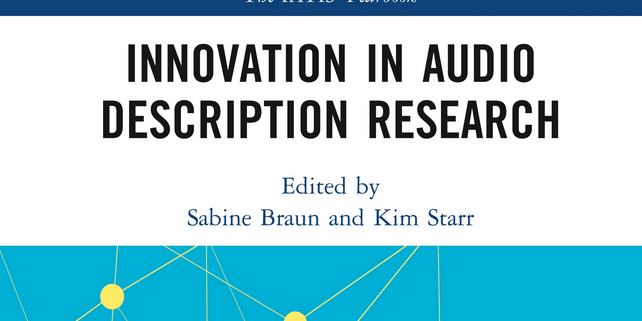At the end of July, MeMAD featured in a volume of ground-breaking research in the field of multimedia accessibility with the publication of Innovation in Audio Description Research (Routledge), an edited collection of projects pitched at the cutting edge of audiovisual research.
In Comparing human and automated approaches to visual storytelling (Braun, Starr & Laaksonen), a chapter dedicated to MeMAD research, consideration is given to the methodologies adopted for comparing human and machine-generated video descriptions, taking both language- and discourse-based approaches. Key characteristics and patterns in human- and machine-evolved descriptions are identified, with the aim of applying human knowledge about video interpretation and description to inform future machine training models.
The University of Surrey’s contribution to the MeMAD project focuses on the analysis of human-generated video descriptions, with two distinct lines of enquiry at the heart of the research: firstly, improving our understanding of human content description principles as a precursor to introducing elements of automation into the video description processes used by broadcast archive journalists; and secondly, exploring opportunities for, and understanding the limitations of, producing AD with the help of semi-automated systems based on applying convolutional neural networks combined with speech recognition technology. Comparing human and automated approaches to visual storytelling is therefore the result of collaborative workstreams shared by the University of Surrey’s Centre for Translation Studies and Aalto University’s computer vision team.
The ‘MeMAD chapter’ sits within a broader research framework addressed by the book, which elaborates on three primary areas of interest. In the first section, new developments in AD are discussed, along with their application in practical settings. This is followed by a section capturing experimental research involving new AD audiences, including viewers facing accessibility barriers beyond the purely visual. In the final section, new technologies are showcased, as a means of re-imagining the scope of AD applications. Throughout the book, the emphasis is placed on methodological innovation and the intersection of audiovisual translation with a range of other disciplines including immersive-experiential studies, reception studies, software development, machine learning, cognition, narrative storytelling and heritage/museum studies. Contributing authors have been drawn from an international field of audiovisual accessibility experts representing academic research and commercial practice.
Innovation in Audio Description Research is available from 30th July, 2020.
Editors: Sabine Braun and Kim Starr
Published by Routledge. ISBN 9781138356672.
https://www.routledge.com/Innovation-in-Audio-Description-Research/Braun-Starr/p/book/9781138356672


